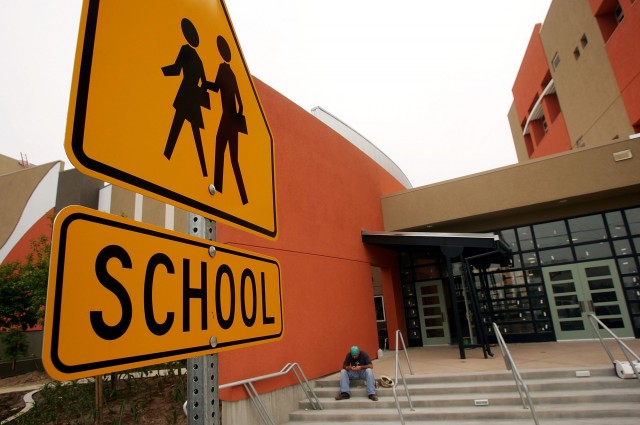The local funding formula attempts to simplify the process. Under the new system, funding is based largely on student demographics. Schools receive a base grant per number of registered students and additional grants depending on the schools’ population of high-need students: English learners, socioeconomically disadvantaged students and foster kids. Individual school districts then have the discretion to spend the grant money as they see fit.
Kirst estimates that low-income districts will see roughly a 50 percent increase in funding per pupil over the next five or six years.
The formula also seeks to address accountability in a way the old system did not. California public school district administrators were required to submit a three-year plan, to be updated each year, outlining how their budgets will improve student performance.
This change in fiscal policy comes alongside another major change in California’s education policy with the implementation of Common Core, a standardized nationwide curriculum for students from kindergarten through 12th grade.
Common Core started as an initiative of the National Governors Association with a goal of establishing consistent curriculum across the 50 states. Currently 43 states have adopted the curriculum, including California.
“It’s a whole new ballgame,” Kirst said, noting Common Core has a “very, very different assessment theory and implementation” process, compared with the current California education model.
“It will bring all students up over time to a level where they’re much better able to succeed in secondary education or job training," he said.
The new Common Core curriculum is still being phased in to California schools and teachers are still being trained, a process that will take three to four years to complete, according to Kirst.
The change isn’t without controversy, however.
In a recent Wall Street Journal op-ed piece, UC Berkeley mathematics Professor Marina Ratner criticized Common Core for complicating basic principles. Ratner also argued that the standard Common Core curriculum does not even exceed California’s old standards.
Although first endorsed by both ends of the political spectrum, the Obama administration's support of the change has prompted Republican legislators in some states to fight Common Core as a federal takeover of the education system. Some states have opted out of the curriculum, citing concerns about the lack of local input.
Concern has also risen about the lack of involvement from higher education professionals in the Common Core, questioning whether the curriculum will actually allow for students to excel beyond middle school and high school level math, science and language arts instruction.
Nonetheless, public school administrators and teachers are working to bring this new curriculum to the classrooms.
Jill Tucker, education reporter for the San Francisco Chronicle, recently told KQED Newsroom's Thuy Vu, “This year is definitely going to be an interesting year” for California schools.
Watch the entire panel from Friday's episode of KQED NEWSROOM:
KQED NEWSROOM is a weekly news magazine program on television, radio and online. Watch Fridays at 8 p.m. on KQED Public Television 9, listen on Sundays at 6 p.m. on KQED Public Radio 88.5 FM and watch on demand here.
